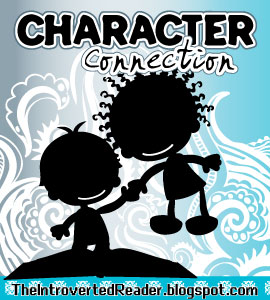 Recommended for ages 12 and up
Recommended for ages 12 and up.
Donna Jo Napoli's most recent book is a worthwhile addition to the ever-growing number of fairy/folk tale retellings for teens that have been published over the last decade or so. Napoli herself has written a number of novels in this genre, including YA versions of Rapunzel (
Zel), Cinderella (
Bound), and Beauty and the Beast
(The Beast), among others.
The story of
The Wager is likely to be less familiar to most readers than those named above. Don Giovanni, a young Sicilian nobleman, seems to have it all. He's the most handsome young man in the town (and well-known for his skill as a lover), he's well-educated, having been groomed to one day be an advisor to the king, and he's rich. But when an earthquake and tsunami caused by the eruption of Mount Etna destroy not only the city of Messina but all Don Giovanni's wealth, he is reduced to stealing and begging on the streets. When a stranger offers him a magic purse that will produce an infinite number of gold coins, Don Giovanni realizes it must be the devil in disguise. But the devil doesn't want his soul; instead he demands the youth's beauty. For three years, three months, and three days, Don Giovanni must not wash, change clothes, shave, or comb his hair. If he does, he will forfeit his soul. Of course, Don Giovanni accepts the wager.
We 21st century Americans are so obsessed with being clean and free of body odors that I never gave much thought to what would happen if a person didn't wash for an extremely long time. Of course we all know the person would be dirty and smell bad. But I never thought about the other problems that Napoli describes in gruesome detail, such as sores which fill with pus, boils, and insects which work their way inside and on top of his body.
As time passes, no human will come near him as he wanders around different regions of Sicily; only his faithful dog, a stray who attaches himself to Don Giovanni on the road, remains loyal. Giovanni is unable to tell anyone why he refuses to change clothes or bathe, and people think he is mad. But in Palermo, he uses his magic purse to buy a palazzo, where he is able to pay to hire servants to tend to his needs (although they don't come too close). Soon he opens his house to all the needy of the area, and even the king hears of his largesse.
King William seeks Giovanni's help to build a new cathedral--
Monreale (an actual cathedral and one of the great monuments of Sicily, whose construction began around this time). In gratitude, the king offers Giovanni the hand of his sister. Can Giovanni beat the devil at his own game--and win the wager, allowing him to wed when his sentence is up...and live happily ever after with his beautiful bride?
The Wager is a re-telling of a traditional Sicilian folk tale, Don Giovanni della Fortuna. While the story is not historical fiction in the strict sense, I would call it "historical fantasy,"; although there are supernatural elements in the story, the author has also set it in a very specific time and place (Sicily in 1169), and filled the tale with the kind of attention to historical detail that we would expect to find in well-written historical fiction.
This book delves into many themes we find in folklore, such as the true meaning and importance of beauty, and whether money really leads to happiness. In many ways this folktale echoes some of the themes of Beauty and the Beast in the transformation of the main character; here, as Giovanni becomes more and more sub-human, through his filth and stench, he becomes more and more human in his compassion, charity, and love for others. In the beginning of the novel, Giovanni is not a very sympathetic character; but as he becomes more and more physically repulsive, to himself and others, the reader is drawn into his story and can't help but empathize with Giovanni's loneliness and hunger for human contact.
One aspect of this novel that I found particularly enjoyable was the manner in which Napoli captures in words the many flavors of Sicily, in all its multicultural splendor, including mouth-watering descriptions of the international Sicilian cuisine, the cacophony of languages, the different religions--Muslim, Christian, and Jewish, and even the landscapes.
While we're not supposed to judge a book by its cover, I'd like to draw attention to the dramatic red and black design of the cover; it's a great fit for the dark nature of this story.
For those interested in exploring the original story, a short version of the original folk tale can be found
at the Sur La Lune website. A similar story by the Brothers Grimm is known as
The Bearskin. An interview with Napoli about this book was published on
Fantasy Magazine's blog.
 Recommended for ages 9-14.
Recommended for ages 9-14.























































